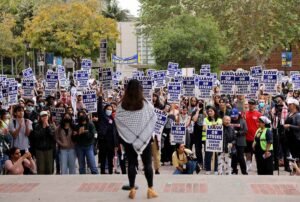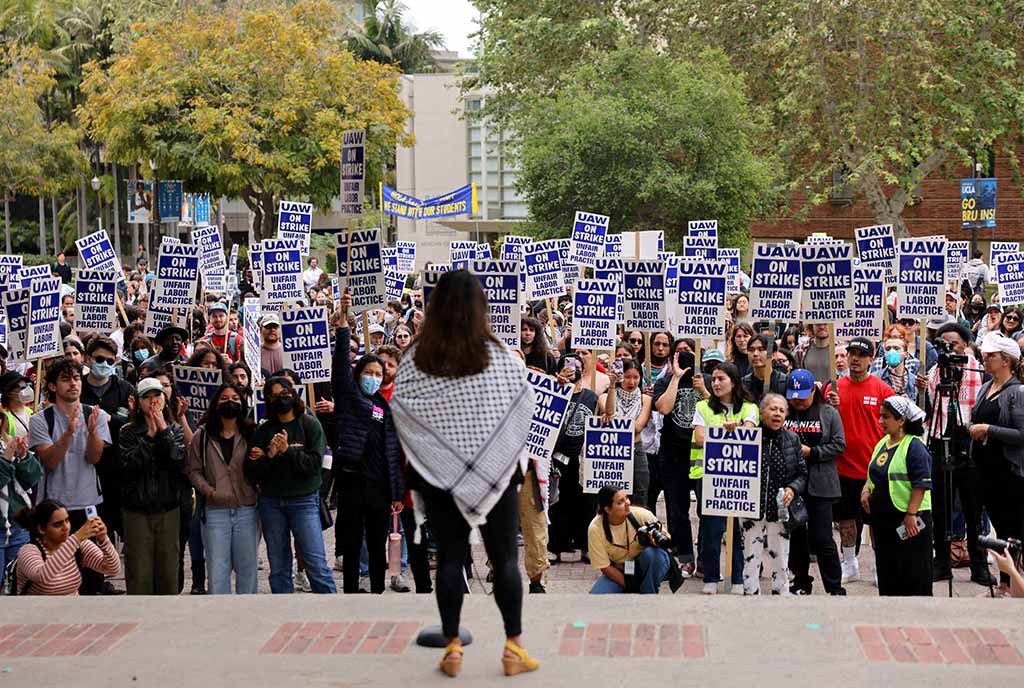May 19, 2016, New York Times
This newswire is an update to the recent NPQ report on the Greenpeace protest of BP’s sponsorship of the British Museum’s “Sunken Cities, Egypt’s Lost Worlds“ exhibit. British authorities arrested eleven of the 85 Greenpeace activists for trespassing. The New York Times also referenced another protest group dedicated to opposing BP in particular: BP or not BP. Though this and previous BP-sponsored exhibits at the British Museum endured protests, the Greenpeace action compelled the museum for the first time to close for several hours “to ensure the safety of the museum’s visitors.”
For BP or not BP, to protest is eloquent:
The Royal Shakespeare Company, British Museum, Royal Opera House, National Portrait Gallery, and Science Museum have all chosen to put BP’s money in their purse. Yet he’s mad that trusts in the tameness of a wolf. BP is doing everything in its power to let not the public see its deep and dark desires—fossil fuel expansion and ecological devastation. BP is the harlot’s cheek, beautified with sponsoring art. It is the greenwash monster, which doth mock the meat it feeds on, and these cultural leaders have made themselves complicit in its crimes. If this were play’d upon a stage now, we could condemn it as an improbable fiction!
For Greenpeace, protesting is a spectacular confrontation. Elaborating on NPQ’s first report on this story, here and here are list of similar climate movement demonstrations presently happening across the globe.
Protesting is often artful and almost always instrumental in forcing most of the freedoms that exist today in liberal democracies. In America, direct action played a significant role in ending slavery, outlawing child labor, curtailing the exploitation of labor, and establishing human rights to women and minorities. Many of the standard channels for working “through the system” were themselves achieved through protest.
Sign up for our free newsletters
Subscribe to NPQ's newsletters to have our top stories delivered directly to your inbox.
By signing up, you agree to our privacy policy and terms of use, and to receive messages from NPQ and our partners.
The British Museum, established in 1753, is dedicated to human history, culture, and art. Greenpeace, established in 1971 by an American, who moved to Vancouver in protest of the Vietnam War, took its first action against nuclear tests on Amchitka Island, Alaska. Today, Greenpeace is second-guessing, if not insulting, decisions and commitments made by the British Museum. Who is the aggrieved one? Is the better approach a more amiable one such as “100 Notables” sending a letter protesting of BP’s sponsorship?
Greenpeace is the world’s largest environmental group with a membership of over 3 million and offices in over 40 countries. As much as NPQ might admire the courage and creativity of Greenpeace activists, Greenpeace is not infallible. In December 2014, Greenpeace activists caused controversy when their attempts to send “a message of hope” led them to enter a protected area in Peru and led many to believe they had irrevocably damaged a World Heritage site, as described in this NPQ report.
Greenpeace moved to the Netherlands following the 1999 revocation by Canada of its charitable status for not demonstrating “any public benefit.” New Zealand denied Greenpeace exempt status for being too political. Germany and Australia issued similar findings.
Greenpeace campaigns against all forms of energy except for wind and solar, but almost all of the world’s energy supply results from other sources. Nearing empty, do Greenpeace activists ever fill up at a BP or any gas station to continue on their journey? Do Greenpeace board members and executives not utilize air travel? Do they avoid all forms of plastic, including all computers and smart phones?
Globalization has a way of appropriating even the most radical convictions and returning them safely in the form of indispensable conveniences and habits. Is Greenpeace more of an annoyance today than a movement? Is Greenpeace more protest theater than change agent?
Greenpeace remains vital, as this 2011 NPQ report purported. But what are the boundaries of dissent, especially when other mission-driven organizations are the objective of protest such as the British Museum? For many decades, genetically modified (GM) crops that are drought-resistant and nutrient-enriched have saved countless lives. Might some NGO legitimately mount a spectacular protest against Greenpeace’s campaign against GM technology?
Protests achieve great wins for humanity. They are piecemeal, but they are real. Our active involvement in what concerns each of us matters. However muted we may feel, we need to exercise our agency. There are no correct answers to the questions raised above, but NPQ will always be here to report and analyze the results of the decisions made by our community of many vital organizations.—James Schaffer













